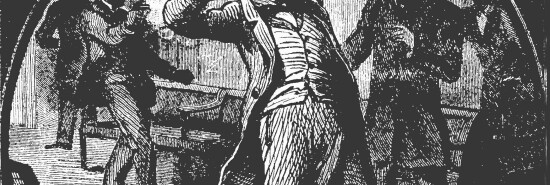
Garfield disproved the idea only cutthroat people win in politics
Quin Hillyer
Video Embed
A recently released biography of assassinated 19th-century President James Garfield is not only an extraordinarily good read but showcases public-service virtues the public should rediscover.
Garfield is little remembered today, but for two decades, he was a titan in public life. President Garfield: From Radical to Unifier by C.W. Goodyear should help resurrect appreciation for a man whose life contained so many elements of 1940s movie heroes that if it were fiction, critics would say screenwriters overplayed the Hollywood tropes.
BIDEN TO TRAVEL TO MAUI TO MEET WITH FIRST RESPONDERS AND SURVIVORS OF WILDFIRES
Garfield was born in a log cabin, and his father died less than a year later. Raised in poverty by his mother, he grew up laboring on rocky-soiled farmland, barely escaped death in childhood mishaps, and walked miles every day to a tiny schoolhouse. He worked on a canal boat, although he could not swim, served as a schoolteacher while toiling in limestone quarries, and then worked as a janitor to pay his bills at a college strangely called the Western Reserve Eclectic Institute. Garfield earned such distinction that he was admitted to the prestigious Williams College in Massachusetts, where he was salutatorian, and then, by age 26, was called home to be principal (essentially the college president) at the Eclectic and a state legislator.
An ardent abolitionist, he eagerly joined Union forces in the Civil War and, despite having no military background, performed so heroically that he became the Union’s youngest general, celebrated nationwide. A dangerous bout of jaundice took him from the battlefield, and local townspeople elected him to Congress while he convalesced.
At 31 years old, he became one of the most renowned House members, pushing for the rights of freed slaves, advocating anti-corruption civil-service reforms, and vastly improving the management of the budget. And on the side, he served as the lead lawyer in the landmark Supreme Court case Ex parte Milligan, cementing the rights of civilians to be free from courts of martial law.
By 1980, two bitter Republican factions vied for the party’s presidential nomination, while Garfield led the campaign for an honest but dull third candidate. But Garfield himself proved easily the most popular man at the convention, and, after many ballots in which he refused to have his own name put forward, he emerged as the only man who could bridge the gap. It was like something from a Frank Capra film: The brilliant, well-liked, honest understudy gets the top post over his own strenuous objections.
Nominated, elected president, and determined to break the grip of corrupt machine politics, he was shot by a crazed federal job seeker after just 104 days in office. Garfield survived the shooting, but quack medical practices led to infections that killed him 79 days later. The assassination was so widely blamed on the political “spoils system” that popular pressure forced Congress to pass the Pendleton Civil Service Reform Act 16 months after Garfield’s death, essentially as a tribute to the martyred president.
The story captivates. What the summary above doesn’t capture (but the new biography captures well) is that a fourth factor — in addition to brilliance, industriousness, and reformist passion — was a sine qua non of Garfield’s stunning successes. Even when eloquently fierce in debate and pitched legislative battles, Garfield was unfailingly polite and respectful to opponents. As his contemporary political titan James Blaine wrote of a Garfield oration, “It was honestly argumentative. … [Everyone listening] must have said to himself, ‘This man is a friend arguing with friends; he makes me his friend, and now speaks to me as such.”
Again and again, one sees Garfield making significant achievements against entrenched opposition without embittering his opponents. Unlike today’s politics, in which far too many people think evincing personal decency is a mark of political weakness, Garfield proved in an otherwise rough-and-tumble era that one can win by persuading and adding new allies rather than dividing to conquer. A full century later, President Ronald Reagan repeatedly proved the same thing, but today, tens of millions of angry people refuse to heed the lesson.
CLICK HERE TO READ MORE FROM THE WASHINGTON EXAMINER
Before it’s too late, in this presidential cycle, the public must reawaken the ideals Garfield espoused in a speech urging equal rights for black people. The “eternal scrolls of justice,” he said, must record “the nobility of the nation’s heart. Animated, inspired, generous, fearless, in the work of liberty and truth, long will the Republic live.”
Please, people, can we once again prove the nobility of the nation’s heart?
